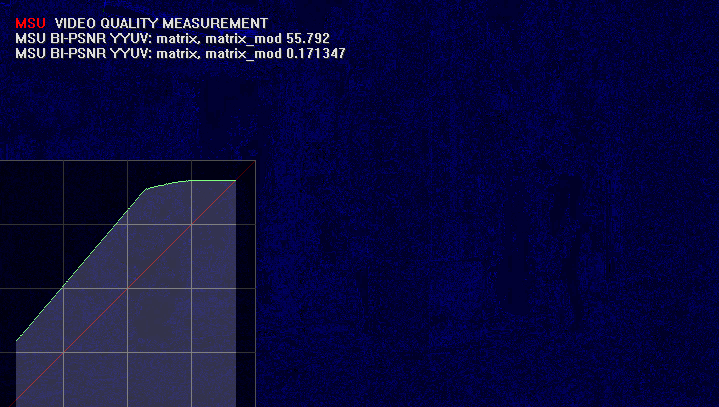[+] - New Feature
[*] - Other
Version 1.1
[*] Visualization bug fixed for non-stadard resolution video
Version 1.0
[+] First plugin release
Usage
[an error occurred while processing this directive]BI-PSNR metric should be used when one of the sequences has any brightness transformation, which does not change within frame. Example of such transformation is uniform increasing of brightness of contrast for single frame of for all sequence. Such transformations prevent usage of standard metrics because of strong brightness difference between comparing frames. BI-PSNR algorithm calculates brightness transformation, which makes frames similar as possible and calculates standard PSNR and MSE metrics taking into account founded transformation.
[an error occurred while processing this directive]Visualization
[an error occurred while processing this directive]There are two part of visualization:
- MSE visualization for frame. Colors of visualization are standard for MSE (in order of error increasing): black-blue-green-red.
- Brightness transformation plot. X-axis is brightness at the first sequence, Y-axis - brightness on the second one. Green points are values, which corresponds to each other (brightness transformation). Red diagonal is identical transformation (no brightness changes).


Plots
[an error occurred while processing this directive]Plots of per-frame PSNR values after the found transformation are drawing after all calculations. Plots are entirely the same as standard per-frame PSNR


Algorithm
[an error occurred while processing this directive]Table C[i,j] is filling for each frame: C[i,j] = { number of points in the same position, which have brightness i at the first sequence frame and j at the second sequence frame }
Next, for each i (brightness value from the first frame) we find corresponding brightness from the second sequence. Following formula is used to estimate distanse from arbitrary values of i and j:
